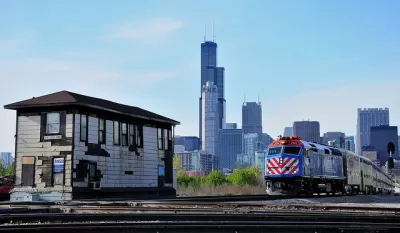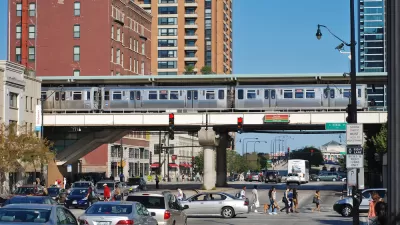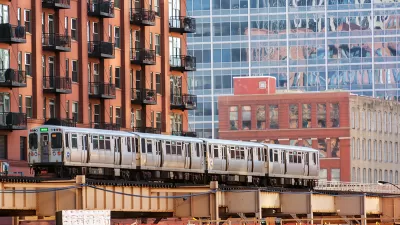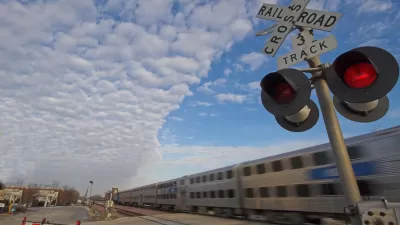On Chicago's massive south side, fixing transit means working on more than just CTA trains.

Chicago's North Side is denser and more prosperous than its South Side. Serving the South Side’s population is more difficult than serving the North Side, not only because its equally-sized population is more diffused, but also because those who live in the area are more likely to be children or elderly than are their counterparts on the North Side, so their transit needs are less likely to be for commutes to the center city to work. That population is more likely to be in school or retired.
"Faced with this set of challenges, advocates and policymakers theoretically have two basic options: Encourage more housing, shops, and jobs near existing transit; and expand the rapid transit network," Daniel Key Hertz argues in a piece for South Side Weekly. Toward the goal of improving transit for the South Side, Kay Hertz recommends waking a "sleeping giant" by leveraging the full potential of the Metra: by connecting its payment system to the CTA's, by making its trips more frequent and by modernizing the city's buses, which have an outsized effect on South Side Chicagoans. "Send a train down the Metra tracks every ten to fifteen minutes and install turnstiles that take Ventra (or give conductors handheld readers), and you’ve effectively created a new “L” line without laying a single foot of new track," Kay Hertz argues.
This work would go a long way toward addressing the persistent inequities in the Midwest's biggest city.
FULL STORY: Beyond the ‘L’

Maui's Vacation Rental Debate Turns Ugly
Verbal attacks, misinformation campaigns and fistfights plague a high-stakes debate to convert thousands of vacation rentals into long-term housing.

Planetizen Federal Action Tracker
A weekly monitor of how Trump’s orders and actions are impacting planners and planning in America.

In Urban Planning, AI Prompting Could be the New Design Thinking
Creativity has long been key to great urban design. What if we see AI as our new creative partner?

King County Supportive Housing Program Offers Hope for Unhoused Residents
The county is taking a ‘Housing First’ approach that prioritizes getting people into housing, then offering wraparound supportive services.

Researchers Use AI to Get Clearer Picture of US Housing
Analysts are using artificial intelligence to supercharge their research by allowing them to comb through data faster. Though these AI tools can be error prone, they save time and housing researchers are optimistic about the future.

Making Shared Micromobility More Inclusive
Cities and shared mobility system operators can do more to include people with disabilities in planning and operations, per a new report.
Urban Design for Planners 1: Software Tools
This six-course series explores essential urban design concepts using open source software and equips planners with the tools they need to participate fully in the urban design process.
Planning for Universal Design
Learn the tools for implementing Universal Design in planning regulations.
planning NEXT
Appalachian Highlands Housing Partners
Mpact (founded as Rail~Volution)
City of Camden Redevelopment Agency
City of Astoria
City of Portland
City of Laramie





























